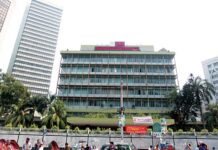
The garment sector fared well in the first quarter of the current fiscal year thanks to the reopening of western retail outlets after a pause for a few months since the Covid-19 outbreak.
But now the threat of a possible second wave of the deadly virus and a price cut from the buyers in an excuse of low demand from the end-customers are holding back the recovery of the multi-billion-dollar industry.
The local exporters are fearing a slow recovery of apparel shipments as many buyers are thinking twice before placing work orders considering the second wave.
With the havoc in the supply chain, the perennial shock of offering lower prices by the buyers has been emerging as a double whammy for the exporters.
Between January and October this year, the average price of garment items shipped from Bangladesh declined by 2.43 per cent, according to data from the National Board of Revenue, Eurostat and OTEXA.
Now, the exporters are just trying to stay afloat amid the shock of order cancellation and abnormal deferment of payment.
Many international retailers and brands have demanded even 220 days of deferred payment, although they signed contracts for 90 days in the letters of credit.
“We didn’t cancel work orders for the second wave. We are just adjusting our stocks,” said a European buyer seeking to remain unnamed.
“Where needed we are placing late. But in 90 per cent cases we are placing orders. There is a rumour that we are not placing orders, which is not true.”
Almost everyone has been facing the same challenge — a low quantity of work orders and low prices, said Anwar-ul-Alam Chowdhury Parvez, managing director of Evince Group, a leading garment exporter.
Buyers have become very cautious about placing work orders, he said.
So, a lot of local suppliers have missed the annual sales bonanza centring the Christmas to some extent, as many important export destinations have already announced partial lockdowns to keep the virus at bay, he said.
The demand for woven garment mainly declined although the demand for knitwear items is still there. Food items have now replaced apparels in the customers’ priority list, he said.
Moreover, the western retailers are now concentrating more on saving capital instead of going for new orders, he added.
Parvez hoped the arrival of vaccines in the market may bring back confidence.
The export of health safety related clothing items has been on the rise, he said.
“So, while the industry struggles to retain 1-2 per cent as income, and during the time of pandemic there is no question of making a profit, such decline in prices is quite frightening, particularly if we try to draw a generalised understanding of the financial health of the industry and its resilience to turn around,” said Rubana Huq, president of the Bangladesh Garment Manufacturers and Exporters Association (BGMEA).
An industry playing on a thin margin is not supposed to bear out such a huge blow for a long time, she said.
The decline in prices is a long-drawn-out trend and the Covid-19 has only worsened the situation, she said.
Although garment export declined by 1.79 per cent despite an over 30 per cent rise in the cost of production in the last five years, the price has fallen by 5.23 per cent in September and by 4.15 per cent in October, she added.
“If we analyse our major export markets, it reveals the same story.”
The US apparel import price from Bangladesh has declined by 1.84 per cent and the EU’s by 1.64 per cent during 2014-2019, Huq said in a WhatsApp message to The Daily Star.
“We started losing unit values in the US since February which reached 9.77 per cent in the negative in July. This is probably unprecedented and cannot be explained by any logic of business.”
A similar picture was seen in the case of the EU earlier this year where the price decline was recorded as high as 4.49 per cent in a single month.
In Bangladesh, the wages have hiked, billions of dollars have been invested under factory safety remediation programme since 2013 and factories are going green as per the prescription of the US Green Building Council, which requires huge capital investments, she said.
“So, such a drop in prices cannot be justified at a time when companies are spending big on maintaining hygiene and social distancing along with their ongoing fight to recover the losses caused by the coronavirus.”
“Buyers have not yet cancelled payments during this second wave.”
But shipment is being deferred for up to a month as buyers are reviewing their market situation, said the BGMEA chief.
“We are observing this with caution as further deferment is feared which will affect the cash flow of factories.”
Huq also said new order placements are completely on hold, which means very soon factories will have a lot of idle capacity to deal with.
“And due to this, a financial crisis in the sector looks imminent.”
As many as 39 per cent of the Bangladeshi garment exporters accept prices below their production costs for the sake of business relations with international retailers, according to a research paper.
Mark Anner, a professor at the University of Pennsylvania, conducted the research on “Squeezing workers’ rights in global supply chains: purchasing practices in the Bangladesh garment export sector in comparative perspective”.









